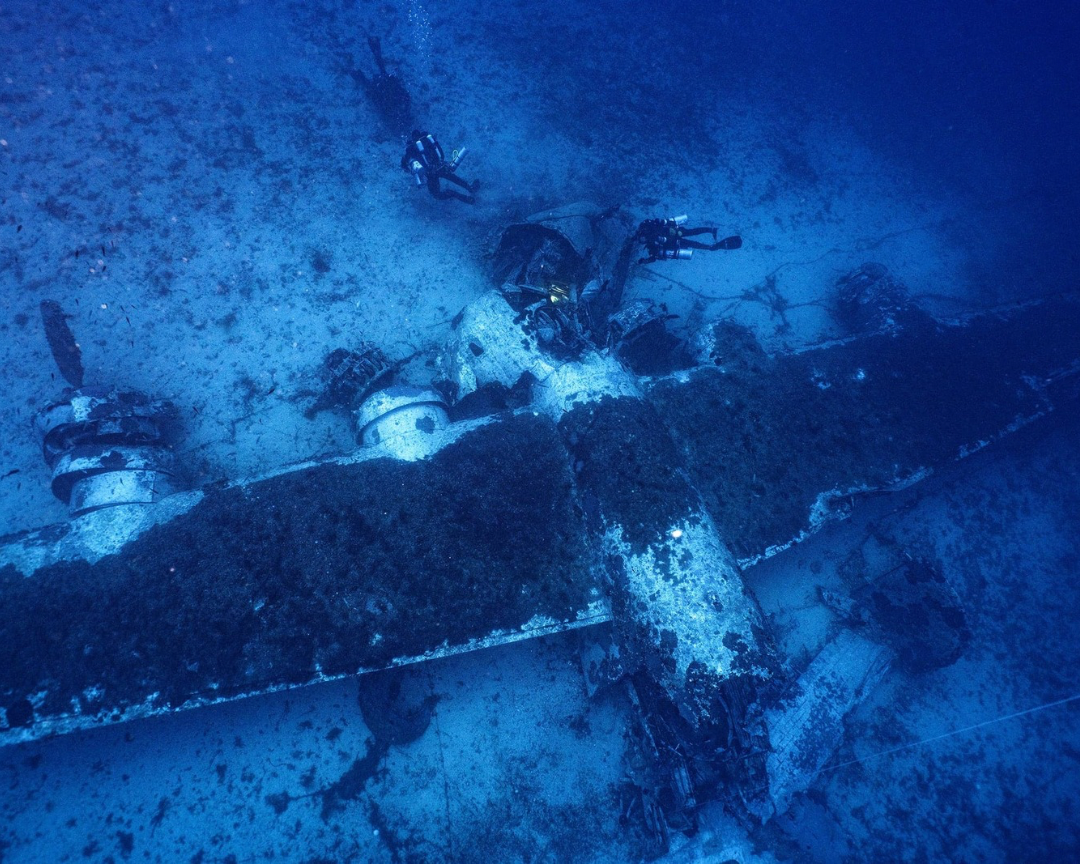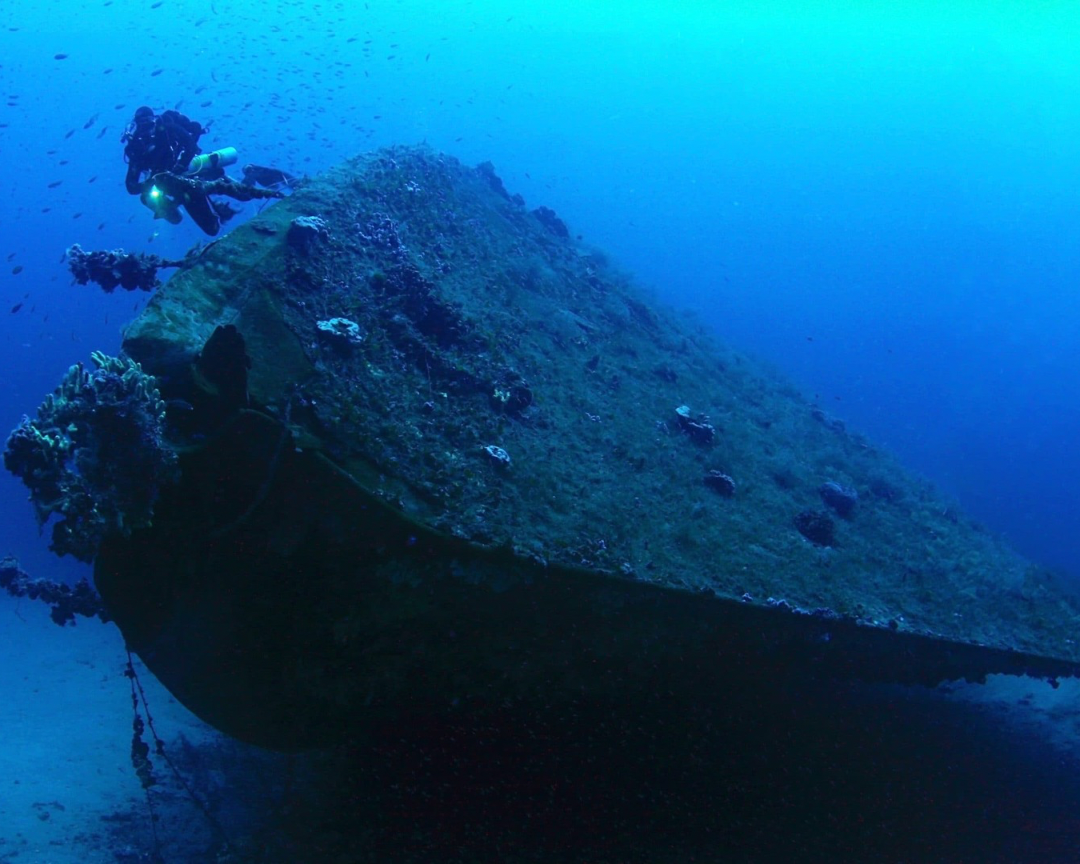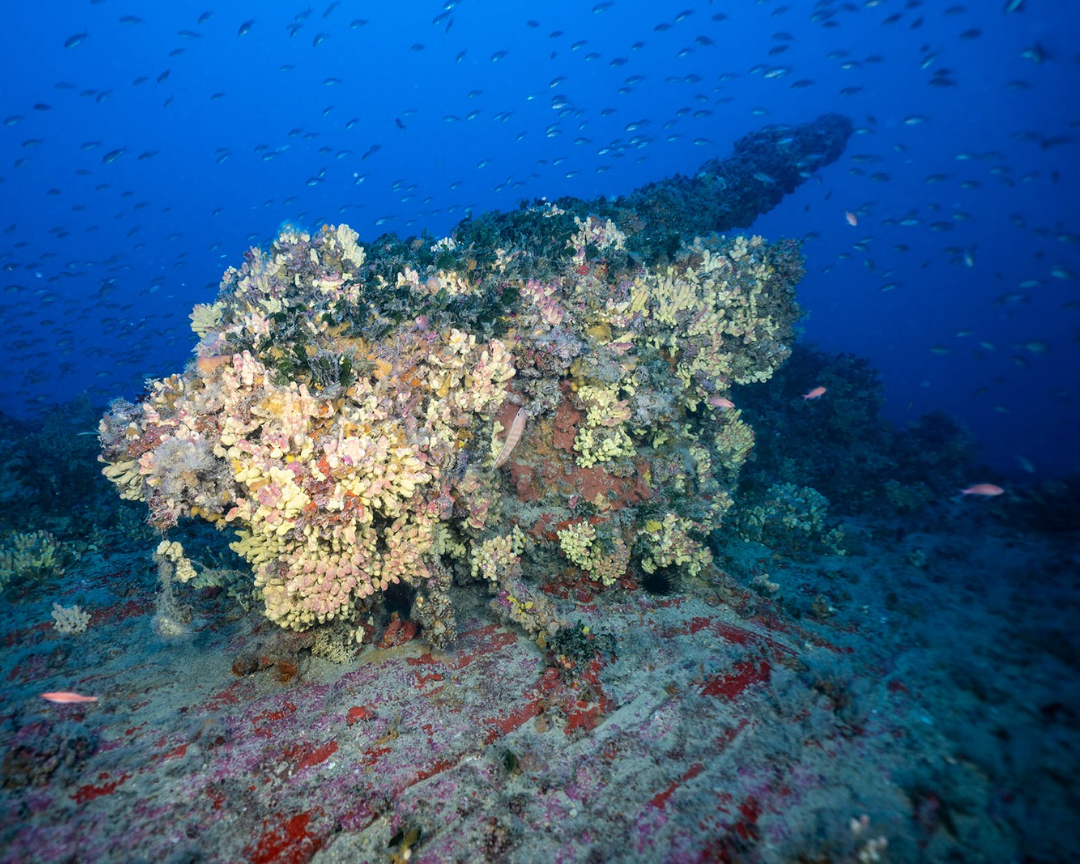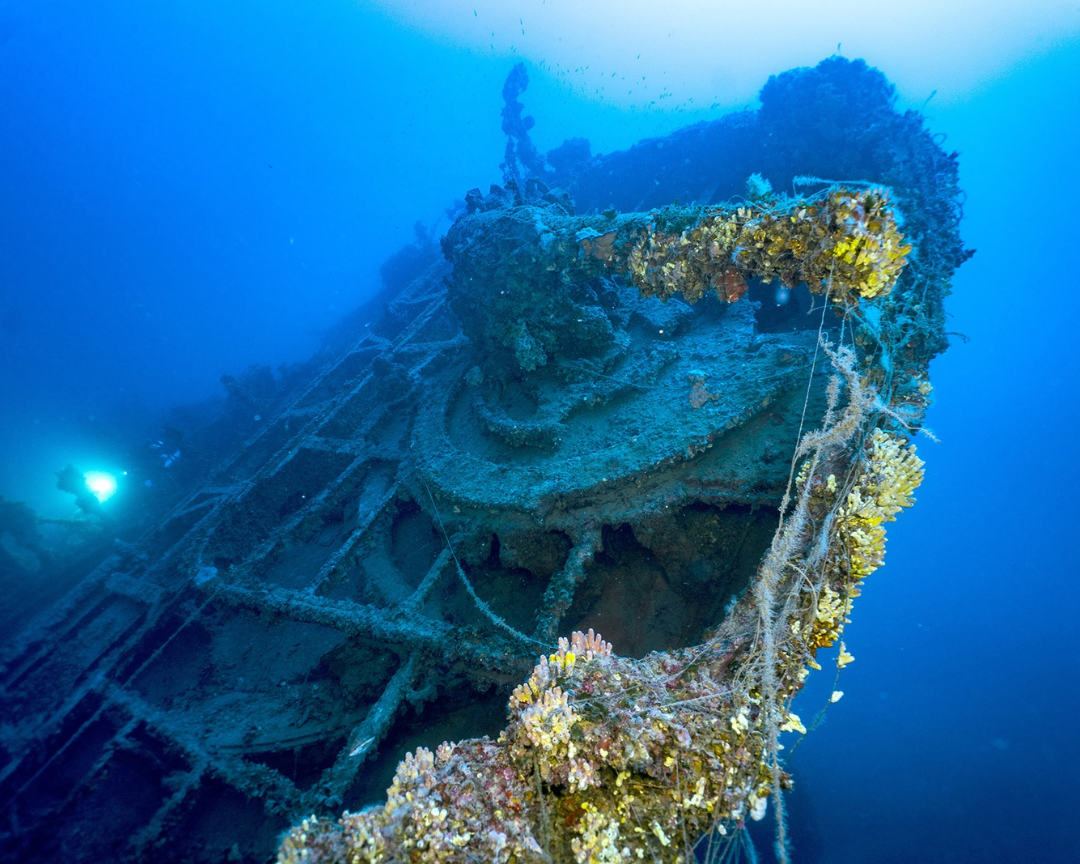B-24 Liberator Bomber

B-24 Liberator Bomber Wreck, Marsaxlokk, Malta
Depth: 55m (avg), 60m (max)
Level: Technical
Overview:
The B-24 Liberator Bomber wreck is one of the most significant World War II aircraft wrecks in the Mediterranean. Located approximately 1.5 km off Marsaxlokk, Malta, this American four-engine heavy bomber rests upright on a sandy seabed at a depth of 55m. The site was discovered in 2015 and opened for divers in 2020, offering a rare glimpse into a historical military site and war grave.
History & Background:
- Service History: Designed by Consolidated Aircraft, the B-24 Liberator was one of the most widely used heavy bombers of World War II. With over 18,000 units built, it played a crucial role in strategic bombing, maritime patrols, and reconnaissance missions for American and Allied forces. The aircraft measured 20m in length with a 33m wingspan, featuring a distinct high-mounted wing and twin tail fin configuration that improved stability and fuel efficiency.
- Crash: On May 6, 1943, this B-24, serial number 42-40112, took off from a U.S. Army Air Force base in Libya as part of a bombing raid on Reggio Calabria, Italy. During the mission, anti-aircraft fire severely damaged the aircraft, causing engine failure. The crew attempted to return to Malta, which was frequently used as a safe haven for damaged planes returning from Sicily and Italy. Multiple failed landing attempts at Luqa airfield forced the crew to ditch into the sea off Delimara Point. The bomber hit the water with its landing gear down, causing it to flip upside down before eventually sinking. Of the 10-man crew, nine survived, but Sgt. Irving R. Newman was lost in the crash. In an extraordinary development, his remains were recovered in 2023, 80 years after the crash, making this wreck both a historical relic and a solemn war grave.
Wreck Details:
- Dimensions: The B-24 Liberator measures 20m in length, with an impressive 33m wingspan.
- Depth: The wreck sits at a maximum depth of 60m, with an average depth of 55m.
- Position: The wreck remains upright on the sandy seabed, making it one of the most intact aircraft wrecks in Malta.
Dive Highlights:
- Accessibility: This is a boat dive as the aircraft is located 1.5 km offshore.
- Wreck Features: The B-24 Liberator remains largely intact, making it a spectacular aircraft wreck dive. The wings are well-preserved, with two of the four engines still bearing their propellers. The nose section is completely destroyed, likely from the crash impact. The cockpit is torn open, exposing interior flight controls and instrument panels. The tail section detached upon impact, lying beneath the fuselage, illustrating the sheer forces of the crash. The bomb bay doors remain open, adding to the eerie atmosphere of the site.
- Marine Life: Over the years, the wreck has been colonized by marine life, transforming it into a flourishing artificial reef. Schools of amberjacks, groupers, and barracudas patrol the site. The aircraft’s structure has become home to octopuses, moray eels, scorpionfish, and nudibranchs. Crustaceans and encrusting corals have settled along the fuselage, adding to its ecological significance. Occasionally, stingrays and eagle rays are spotted resting on the seabed near the wreck.
Why Visit?
The B-24 Liberator Bomber wreck offers an unparalleled look into World War II aviation history. Its structural integrity, historical significance, and status as a war grave make it one of Malta’s most important deep wreck dives. This site is a must-visit for technical divers interested in military history, aircraft exploration, and marine biodiversity. Its haunting beauty, well-preserved structure, and powerful story of survival and loss make diving here an unforgettable experience.




